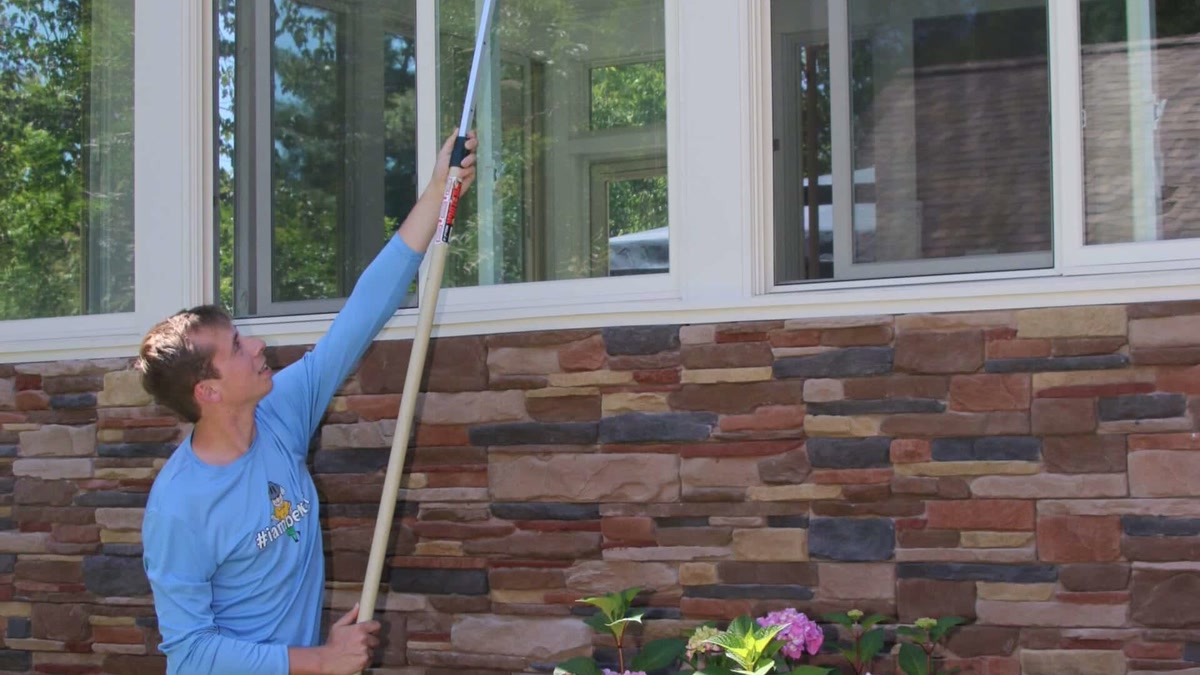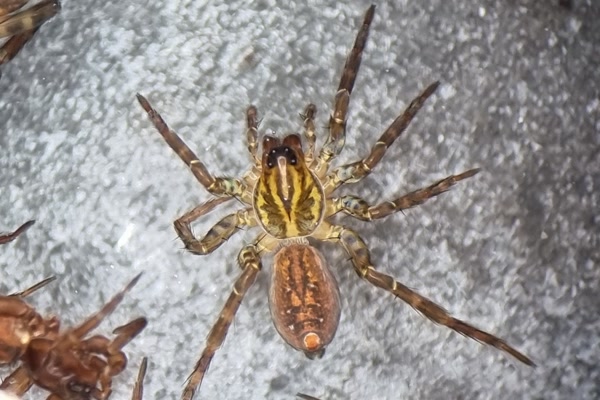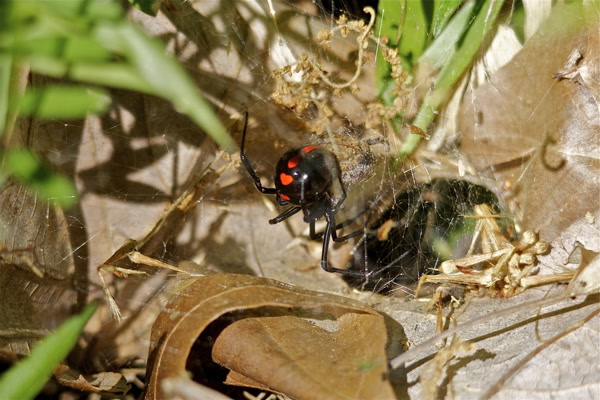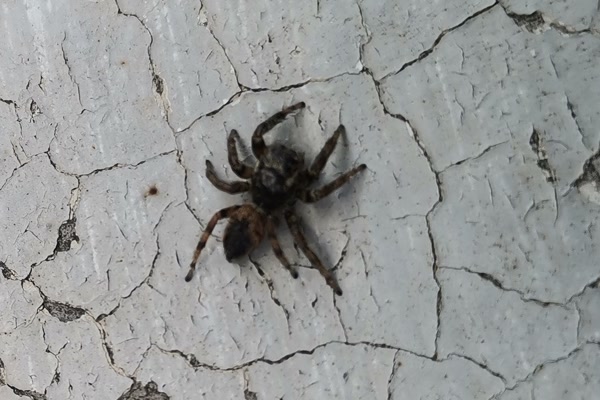Finding spiders crawling around your home can be unsettling. You might see a spider dash across the floor or notice dusty webs appearing in corners. It’s a common pest problem, especially here in the DC metro area. Many homeowners feel unsure about how to get rid of spiders in house effectively. Dealing with these eight-legged critters often feels like a constant battle, but it doesn’t have to be.
I’m George Schulz, a third-generation pest control professional with five years of hands-on experience and a licensed technician at Better Termite & Pest Control. Over my years helping homeowners manage pests, I’ve seen firsthand how spiders find their way into homes. They aren’t trying to bother you specifically. They’re usually just looking for food or shelter. Learning how to manage these pests is key to feeling comfortable in your own space again.
This guide will walk you through identifying common local spiders, understanding their habits, and using practical methods to get rid of spiders and prevent them from returning. We’ll cover simple DIY tricks and explain when professional pest control might be the best solution.
Understanding Why Spiders Invade Your Home
Spiders typically enter homes for two main reasons: searching for shelter or hunting prey. As the weather cools down in the fall, spiders living outdoors often wander inside through small openings to escape the cold. According to University of Maryland Extension, spiders often enter through gaps around doors, windows, and foundations. Tiny spider species can easily slip through cracks you might not even notice.
Sometimes, spiders get carried inside accidentally on things like firewood, potted plants, or storage boxes. Once inside, they often head for quiet, undisturbed spots like basements, crawl spaces, attics, or closets. These areas where spiders tend to gather often have other insects, providing a convenient food source.
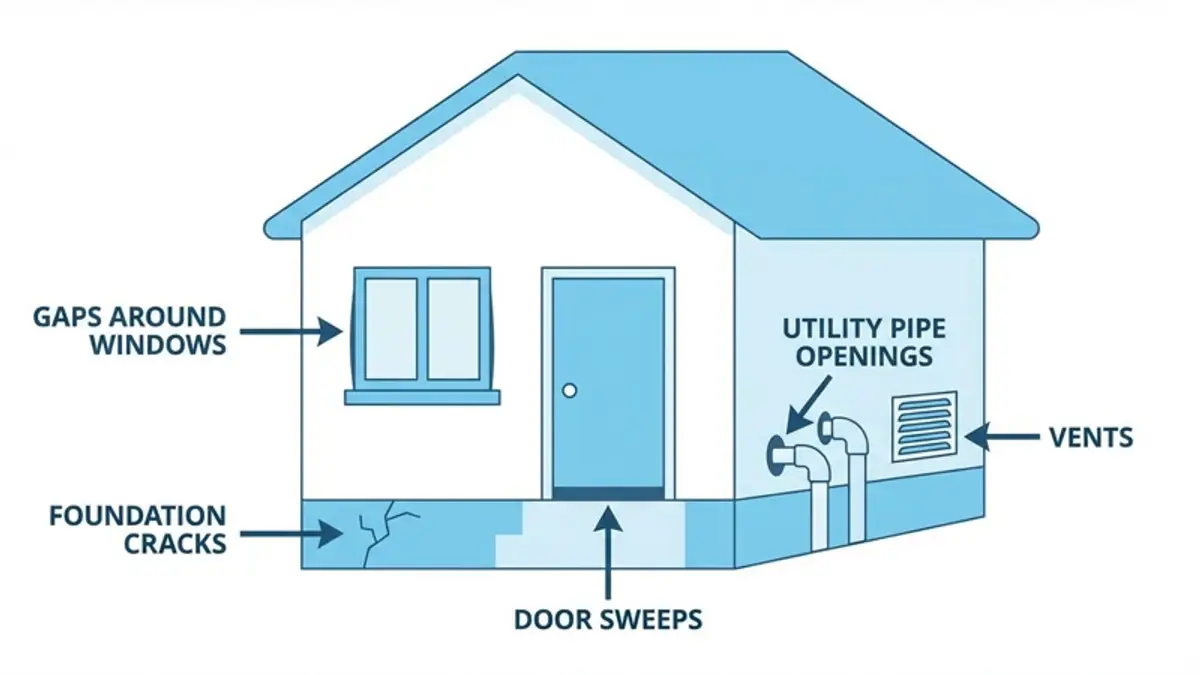
If your home has lots of flies, ants, or other small bugs, it might unintentionally attract spiders. Spiders aren’t like ants or roaches that invade in large groups. Most spiders enter sporadically while hunting or seeking refuge. Knowing how they get in is the first step to figuring out how to keep spiders out.
Identifying Common Spider Species in the DC Metro Area
Knowing which type of spider you’re dealing with can help you decide the best way to get rid of it. Here in the DC, Maryland, and Northern Virginia area, we see several common spider species.
American House Spiders: The Everyday Indoor Pest
These are probably the most common house spiders you’ll encounter. American house spiders (Parasteatoda tepidariorum) are small to medium-sized, usually brownish or grayish with faint markings. They spin messy, tangled spider webs (cobwebs) in corners, along ceilings, and in basements. These spiders are generally harmless and prefer quiet spots. Regular cleaning often keeps their numbers down. They are a frequent type of spider we treat for in homes around Alexandria, VA.
Cellar Spiders: Long-Legged Intruders
Often called “daddy-longlegs spiders,” cellar spiders (family Pholcidae) have very small bodies and extremely long, thin legs. They hang upside down in loose, irregular webs, typically in damp, cool places like basements and crawl spaces. While their webs can be annoying, these spiders are harmless to people and even prey on other spiders. Simply sweeping away their spider webs is usually enough.
Wolf Spiders: Quick, Ground-Hunting Spiders
Wolf spiders are larger, robust hunting spiders that don’t build webs to catch prey. They are often brown or gray, hairy, and move very quickly. You might spot one darting across the floor, especially in basements or garages. They often wander inside during the fall. Wolf spiders may look intimidating due to their size, but their bite is not considered dangerous, similar to a bee sting. They are actually beneficial predators of other pests.
Jumping Spiders: Small But Active House Invaders
Jumping spiders are small, stout spiders, often black with bright markings. They have large eyes and are known for their quick, jumping movements. These spiders usually hunt during the day, often near windowsills or sunny walls, stalking flies and other insects. They are curious but harmless spider types and rarely bite humans.
Yellow Sac Spiders: Nocturnal Web Makers
Yellow sac spiders (Cheiracanthium species) are pale yellow or beige, small, and fast-moving. They are nocturnal hunters and build small silk sacs in corners or crevices where they hide during the day. These spiders may bite if trapped against the skin, like in bedding or clothing. While their bite can cause mild irritation, research indicates yellow sac spider bites rarely cause serious issues, contrary to some myths.
Black Widow Spiders: When Caution is Essential
Black widow spiders are known for their venom. The adult female is glossy black with a red hourglass shape on her belly. They prefer dark, sheltered spots outdoors like woodpiles, sheds, or under porches, and are not commonly found inside homes in areas like Arlington unless accidentally brought in.
Black Widow Safety
While shy, black widow spider bites are medically significant, causing pain and potentially severe symptoms. Always use caution and wear gloves when working in areas where they might hide. This is one spider where professional pest control is often recommended.
Orb-Weaver Spiders: Garden Helpers Turned House Guests
Orb-weavers are famous for their large, circular webs found outdoors in gardens or on porches. Species like the black-and-yellow garden spider are common in late summer. They are beneficial, catching many flying insects. Orb-weavers are not indoor spiders and are completely harmless to people. Seeing one on your house exterior usually just means they found a good spot to catch bugs near a light source.
Spider Identification Comparison Chart
| Spider Type | Size | Color | Web Type | Danger Level | Common Location |
|---|---|---|---|---|---|
| House Spider | Small-Medium | Brown/Gray | Messy cobwebs | Harmless | Corners, ceilings |
| Cellar Spider | Small body, long legs | Pale tan | Loose tangles | Harmless | Basements, crawl spaces |
| Wolf Spider | Large | Brown/Gray | None (hunter) | Low (bee-sting bite) | Floors, garages |
| Jumping Spider | Small | Black with markings | None (hunter) | Harmless | Windows, sunny walls |
| Yellow Sac | Small | Pale yellow | Small silk sacs | Low (mild irritation) | Upper corners, ceilings |
| Black Widow | Medium | Glossy black, red hourglass | Irregular | High | Outdoor sheltered spots |
| Orb-Weaver | Medium-Large | Various colors | Circular/wheel | Harmless | Gardens, porches |
Recognizing Spider Webs and Signs of Infestation
Spotting spider webs is the most obvious sign you have spiders around your home. Different species create different types of webs. Messy cobwebs in corners often belong to house spiders, while intricate circular webs outside are made by orb-weavers. Cellar spiders create loose, tangled webs in damp areas.
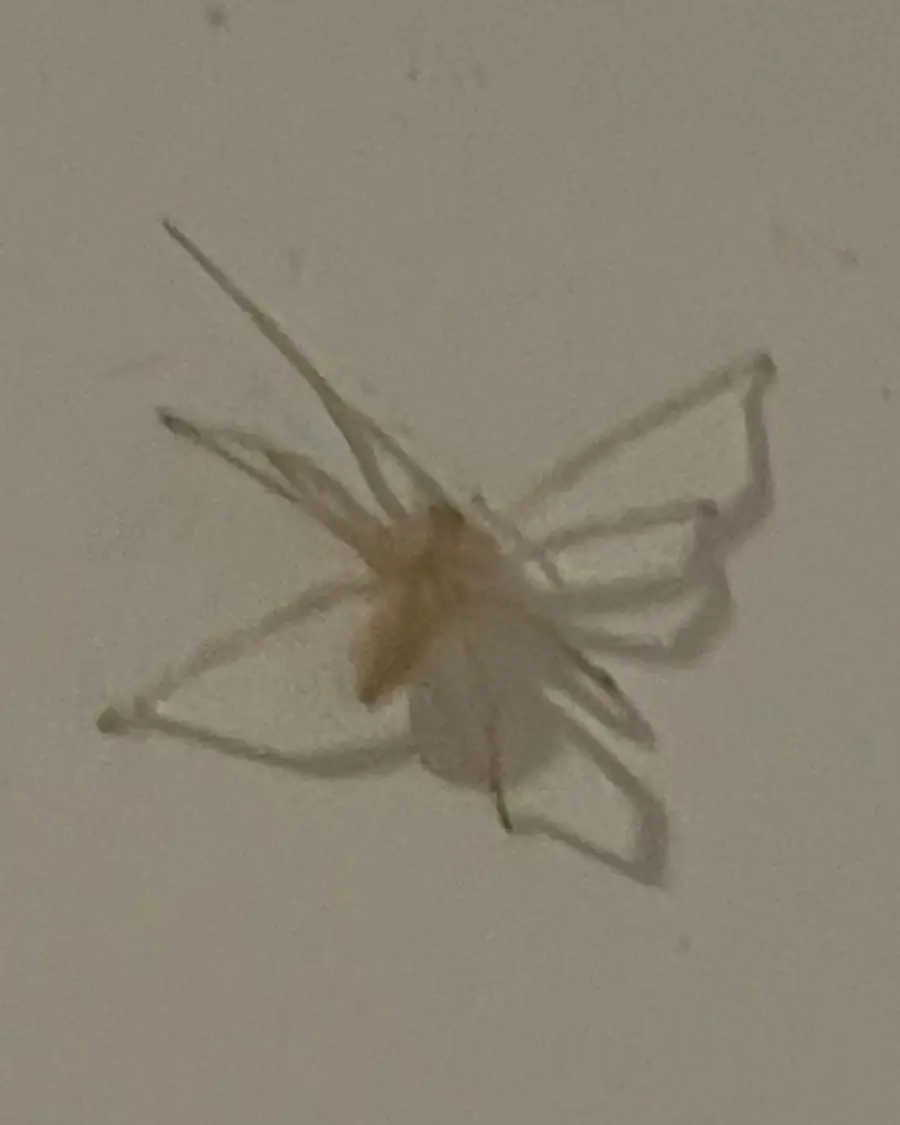

Besides webs, look for small, silken sacs - these could be egg sacs, indicating spider reproduction. Yellow sac spiders create small, dense silk retreats where they hide. Finding multiple spider webs or seeing spiders frequently, especially different types or adult spiders, might suggest a larger pest issue or easy entry points into your home.
Keeping an eye out for these signs helps in getting rid of spiders before their numbers grow. Consistent sightings might point towards a spider infestation, needing more focused pest control attention.
Case Study: Mt. Vernon Spider Problem
Spiders are one of our top pests in the area. In my experience working in wooded areas like Mt. Vernon where there are lots of trees and moisture, I’ve seen some of the highest spider populations in Northern Virginia. They will typically build up pretty quickly in the eaves of homes. When this happens, the two-pronged approach we use is: 1) remove the current webs with a device called a webster, and 2) use a non-repellent as a perimeter treatment along the foundation. This combination tackles both the existing spiders and prevents new ones from settling in.
Effective Methods to Get Rid of Spiders in House
Once you spot spiders or their webs, you’ll want to know how to get rid of spiders in house effectively. There are several effective ways to tackle these pests, from simple DIY methods to calling for professional help. The best approach often depends on the type of spider and how many you’re seeing.
DIY Spider Control: Tools and Techniques for Homeowners
Effective DIY Spider Removal Methods
Capture and Release: If you see a spider and don’t want to kill it, gently trap it under a cup, slide a piece of paper underneath, and release it outside. This works well for most harmless house spiders. Tools like spider catchers (long-handled devices) can help if you prefer keeping your distance.
Vacuuming: A vacuum cleaner with a hose attachment is a great tool. You can easily suck up spiders, spider webs, and egg sacs from corners, ceilings, and behind furniture. This is an effective way to get rid of spiders immediately.
Sticky Traps: Spider traps (glue boards) placed in corners, along baseboards, or in areas where spiders like to hide (like basements or garages) can catch wandering spiders, especially ground hunters like wolf spiders. This also helps monitor spider activity.
Using Natural Spider Repellent
Many people prefer using natural methods to repel spiders rather than chemicals. Several common household items can act as a natural spider repellent.
Do Natural Repellents Really Work?
While natural ways to keep spiders away can be helpful, scientific research shows mixed results. Studies suggest that while some essential oils show repellent properties in laboratory settings, they often require frequent reapplication in real-world conditions and may not be strong enough for significant spider problems. Natural repellents work best as part of a larger integrated pest management strategy rather than a standalone solution.
How to Keep Spiders Out: Prevention Strategies
The best way to get rid of spiders in house long-term is to prevent spiders from entering in the first place. Focusing on exclusion and making your home less attractive to spiders and their prey is key. Taking steps to keep spiders away proactively is more effective than constantly dealing with them once they’re inside.
Sealing Entry Points and Home Maintenance
Key Prevention Steps
Seal Cracks and Gaps: Use caulk to seal cracks in the foundation, walls, and around windows and door frames. Pay close attention to where utility pipes and wires enter the house.
Check Screens and Sweeps: Ensure window and door screens are in good repair, without holes or tears. Install door sweeps under exterior doors to close gaps.
Exterior Lighting Strategy: Bright outdoor lights attract insects, which in turn attract spiders. Switch to yellow “bug lights” or sodium vapor lights, which are less attractive to insects. Close blinds at night to prevent interior lights from drawing insects (and thus spiders) towards windows.
Maintaining a Clutter-Free Environment
A clean and tidy home offers fewer hiding places and less food for spiders.
Regular Cleaning: Vacuum and dust regularly, especially in corners, under furniture, and in closets, basements, and attics. Removing cobwebs promptly eliminates hiding spots and potential egg sacs. This helps keep your home clean and less inviting.
Reduce Indoor Clutter: Piles of boxes, papers, or clothing create ideal hiding spots for spiders and the insects they eat. Keep storage areas organized and tidy, especially in basements and garages. Store items in sealed plastic bins instead of cardboard boxes.
Manage Outdoor Clutter: Keep the perimeter of your home clear of debris like woodpiles, leaf litter, compost piles, and dense vegetation. Store firewood off the ground and away from the house. This reduces spider habitats near your foundation, making it harder for them to find a way into your home.
Taking these preventative measures seriously is the most effective spider prevention strategy and helps keep spiders out of your home. It’s a crucial part of an overall pest control plan.
Professional Pest Control Options for Spider Management
Sometimes, despite your best efforts, you might face a persistent spider problem or encounter dangerous spiders like black widow spiders. If DIY methods and prevention aren’t enough, or if you suspect a large spider infestation, calling a professional pest control company like Better Termite & Pest Control is a good idea. We often help homeowners in places like Herndon and McLean deal with tougher spider issues.

Professional pest control services offer several advantages:
Expert Identification: Our licensed technicians can accurately identify the spider species causing problems, including distinguishing harmless spiders from potentially harmful ones like the black widow spider.
Thorough Inspection: We perform detailed inspections (like our 78-Point Home Inspection) to find spider hiding spots, entry points, and contributing factors like moisture issues or other pest infestations that serve as a food source.
Targeted Treatments: Professionals use effective products and application methods. Treatment often involves applying non-repellent sprays to exterior areas where spiders are active (windows, doorways, eaves) and targeted interior treatments in specific spots rather than broad spraying. We focus on using products reviewed by our internal research team, having removed 9 common harsh chemicals from our standard treatments.
Specific Pest Focus: We tailor treatments to the situation. For example, dealing with cellar spiders might involve dusting void areas, while controlling black widow spiders requires careful treatment of their web locations.
Calling for professional pest control provides a more comprehensive approach to spider control, especially for significant or recurring issues.
Integrated Pest Control: Combining DIY Tactics with Expert Treatments
The most successful approach to get rid of spiders in house often involves integrated pest management (IPM). This means combining preventative measures, DIY spider removal, and professional pest control services when needed.
An integrated strategy looks like this:
- Continue regular cleaning, decluttering, and sealing entry points (spider prevention)
- Use natural spider repellent like peppermint oil in sensitive areas as a first line of defense
- Use vacuuming or spider traps for spiders you see inside your home
- Hire a pest control company for recurring exterior treatments to maintain a protective barrier around your house
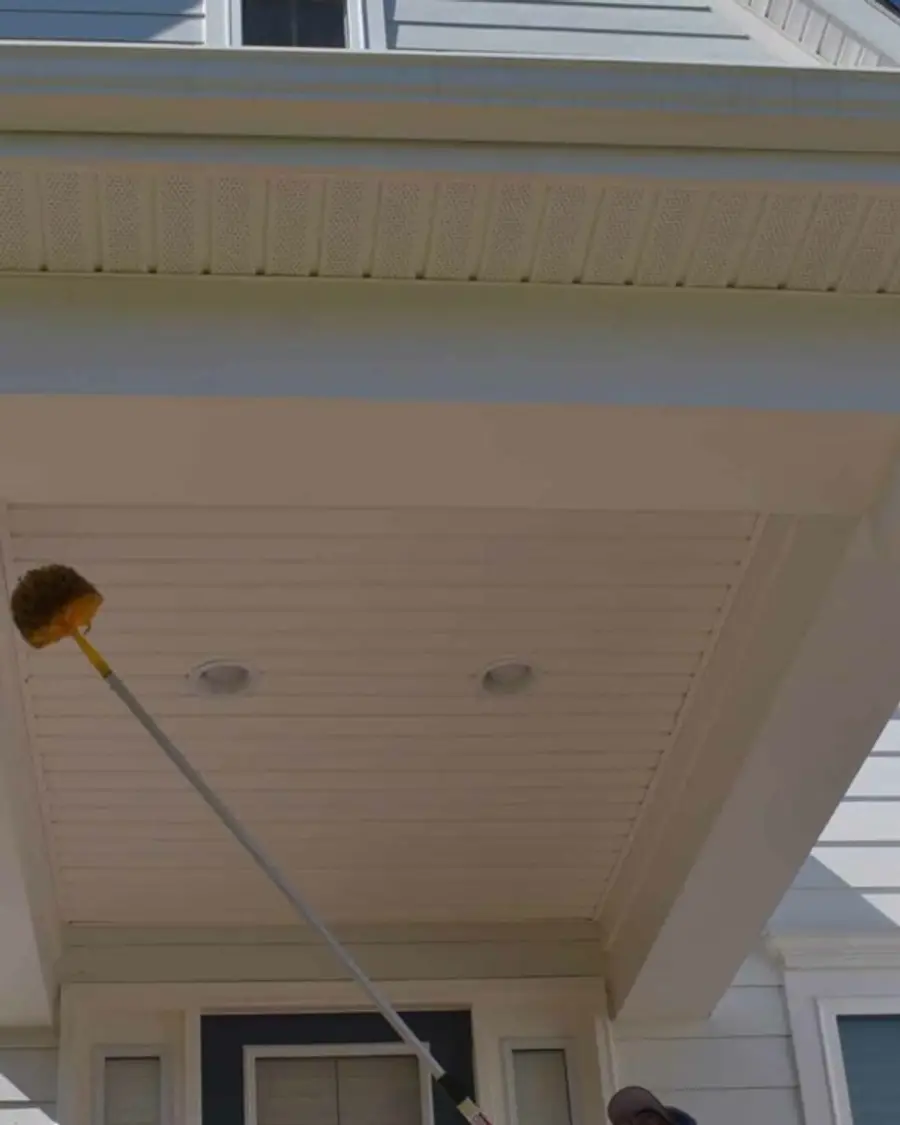

Our Seasonal Protection Plan is designed around this idea. We provide regular exterior treatments targeting pests active each season, which helps prevent spiders from entering your home. This consistent approach, combined with your own efforts to keep your home tidy, offers the best long-term spider control. Remember, with our service, if spiders return between scheduled visits, we offer free unlimited callbacks. That’s part of The Better Promise.
Seasonal Spider Control and Maintenance Tips
Spider activity changes with the seasons. Understanding these patterns helps you adjust your pest control strategy.
| Season | Spider Activity | Key Actions |
|---|---|---|
| Spring | Overwintered spiders emerge; yellow sac spiders become active | Focus on cleaning; check window screens |
| Summer | Outdoor activity peaks; orb-weavers build large webs; cellar spiders increase in damp areas | Maintain exterior barriers; manage outdoor lighting |
| Fall | Peak entry period - spiders seek shelter from cold; wolf spiders, house spiders common | Heavy focus on sealing entry points; clear foundation debris; preventative treatments |
| Winter | Activity slows; some species live indoors year-round | Continue basic cleaning and monitoring |
Fall is a peak time for spiders entering your home seeking shelter from the cold. This is also when overwintering pests like stink bugs and lady bugs seek entry, so exclusion is critical during September through November.
Spider Control Treatment Process Overview
When you call Better Termite & Pest Control for help with spiders, here’s generally what you can expect, following The Better Method:
-
Expert Phone Consultation: You’ll speak directly with one of our licensed technicians - no call centers. We’ll discuss the spider problem, answer questions about how to get rid of spiders, and provide a plan and quote tailored to your home, whether you’re in Falls Church or Silver Spring.
-
78-Point Home Inspection: A licensed professional performs a detailed inspection of your property, identifying spider hot spots, entry points, moisture issues, and factors that might attract spiders. We check inside and out.
-
Initial Treatment: We apply targeted treatments using products approved by our internal research team. This often includes an exterior barrier spray focusing on windows, doors, eaves, and foundation areas where spiders are active. Interior treatments are usually limited spot applications in corners or entry points. We also perform de-webbing, removing accessible spider webs around eaves and porches (typically up to 6-8 feet).
-
Seasonal Protection Plan: For ongoing spider control, we recommend tri-annual visits (three times per year). These maintain the exterior barrier, address seasonal pest pressures, and include further de-webbing as needed. This consistent care is crucial to keep spiders away.
This comprehensive process aims not just for immediate spider removal but for long-term prevention, helping you rid your home of spiders.
Managing Indoor Spider Infestations: Tips for Immediate Relief
If you suddenly find yourself dealing with more spiders than usual inside your home, here are quick steps you can take while planning long-term spider control:
These actions provide immediate relief and help manage the situation while you implement broader spider prevention and pest control strategies to keep spiders out of your house.
Utilizing Natural Spider Repellent for Ongoing Protection
Using natural spider repellent like peppermint oil or a mix of white vinegar and water can be a supportive part of your spider control plan. Here’s how to use them effectively:
These natural approaches offer a way to make your home less appealing to spiders, supporting your overall effort to get rid of spiders in house.
Additional Pest Control Considerations
Often, a spider problem is linked to other pest issues. Spiders go where they can find food. If you have lots of flies, ants (like those common in Alexandria), centipedes, millipedes, cockroaches, or even overwintering pests like stink bugs, you’re more likely to have spiders hunting them.
Addressing the underlying pest infestation is crucial for long-term spider control. Our comprehensive pest control services cover a wide range of common household pests found in the DC metro area, including many spider food sources. By managing insects, we indirectly help keep spiders away.
The Better Promise: Our Commitment to Effective Spider Pest Control
We understand that dealing with pests like spiders can be frustrating. That’s why we stand by The Better Promise. If you have a service plan with us and aren’t seeing results, we offer free unlimited callbacks. We’ll keep returning to re-treat the issue until we get the spider populations under control.
We also believe in flexibility. You’re not locked into a contract and can cancel your service anytime with 30 days’ notice if you’re not satisfied. With 57 years of experience serving the DC metro area, over 1,000 five-star reviews, and 300 years of combined team experience among our licensed technicians, we have the expertise to solve your spider problem.
Conclusion: Achieving a Spider-Free Home
Getting rid of spiders in your home is achievable with the right knowledge and approach. By understanding why spiders come inside, identifying common species, and implementing consistent prevention strategies like sealing entry points and maintaining a clean environment, you can significantly reduce their presence. Using tools like vacuums, spider traps, and natural spider repellent can help manage the spiders you do see.
For persistent issues or concerns about specific spider species like the black widow spider, professional pest control offers targeted solutions and expertise. Remember, an integrated approach combining DIY efforts with routine professional treatments provides the most reliable long-term spider control, helping you keep spiders out of your house year-round.
Frequently Asked Questions
How do I permanently get rid of spiders in my house?
+
Permanently getting rid of every single spider is difficult, as they naturally occur outdoors and can occasionally wander in. However, you can achieve long-term control and significantly reduce their presence. This involves consistent spider prevention like sealing all entry points, regular cleaning to remove webs and hiding spots, managing other pest populations that serve as food, and considering routine exterior pest control treatments to maintain a barrier around your house.
What keeps spiders away from the house?
+
Several things help keep spiders away. Sealing cracks and gaps is crucial to prevent spiders from entering. Reducing outdoor clutter near the foundation eliminates hiding spots. Turning off unnecessary exterior lights minimizes attracting insects, a major spider food source. Regular cleaning inside your home removes webs and discourages spiders from settling. Using repellents, both natural (peppermint oil, vinegar) and professional treatments, along the perimeter can also deter spiders.
What do spiders hate the most?
+
Spiders are believed to dislike strong scents. Peppermint is often cited as something spiders hate. Other potent smells like white vinegar, citrus, eucalyptus, and tea tree oil are also thought to repel spiders. Additionally, spiders dislike disturbance; regular cleaning and removing their webs makes an area less hospitable. Many spiders don't like being exposed, preferring dark, quiet hiding places.
What smells keep spiders away?
+
Strong aromatic scents are often used as natural spider repellent. The most common include peppermint oil, citrus oils (lemon, orange), vinegar (especially white vinegar), eucalyptus oil, and tea tree oil. These intense smells are thought to overwhelm a spider's senses or be irritating, encouraging them to stay away from your home. Using an essential oil diffuser or spraying diluted solutions is a common way to get rid of spiders using scent.
Can natural spider repellent work effectively for my home?
+
Natural spider repellent methods, like using peppermint or vinegar sprays, can offer some level of deterrence, especially for minor spider issues or as a supplement to other controls. They often need frequent reapplication to remain effective. For a significant spider problem or for preventing entry of dangerous spiders, relying solely on natural repellents might not be sufficient. An integrated pest control approach, combining natural methods with exclusion, sanitation, and potentially professional pest control services, usually yields the best results to keep spiders managed.
When is spider season in the DC metro area?
+
Spider activity peaks twice in the DC metro area. In spring, spiders that overwintered indoors become active again, and yellow sac spiders often emerge. The fall season (September-November) is when you'll see the most spiders trying to enter homes as they seek shelter from cooler temperatures. Wolf spiders, house spiders, and yellow sac spiders are especially common during this fall migration period.
Are house spiders dangerous in Virginia and Maryland?
+
Most house spiders in Virginia and Maryland are harmless. Common species like house spiders, cellar spiders, wolf spiders, and jumping spiders pose no real threat to humans. The northern black widow is the primary venomous spider in our region, but it prefers outdoor sheltered areas like woodpiles and sheds. Black widow bites are rare and these spiders are not commonly found inside homes.
With five years of hands-on experience in the pest control industry, George Schulz is a registered technician with the Virginia Pest Management Association and a proud third-generation professional in a family business that's been protecting homes for over 57 years. He manages and trains a team of service pros while also leading internal research efforts—recently spearheading a deep-dive review of thousands of documents on pest control materials to hand-pick the most kid and pet friendly, most effective solutions tailored specifically for homes in the DC metro area.
